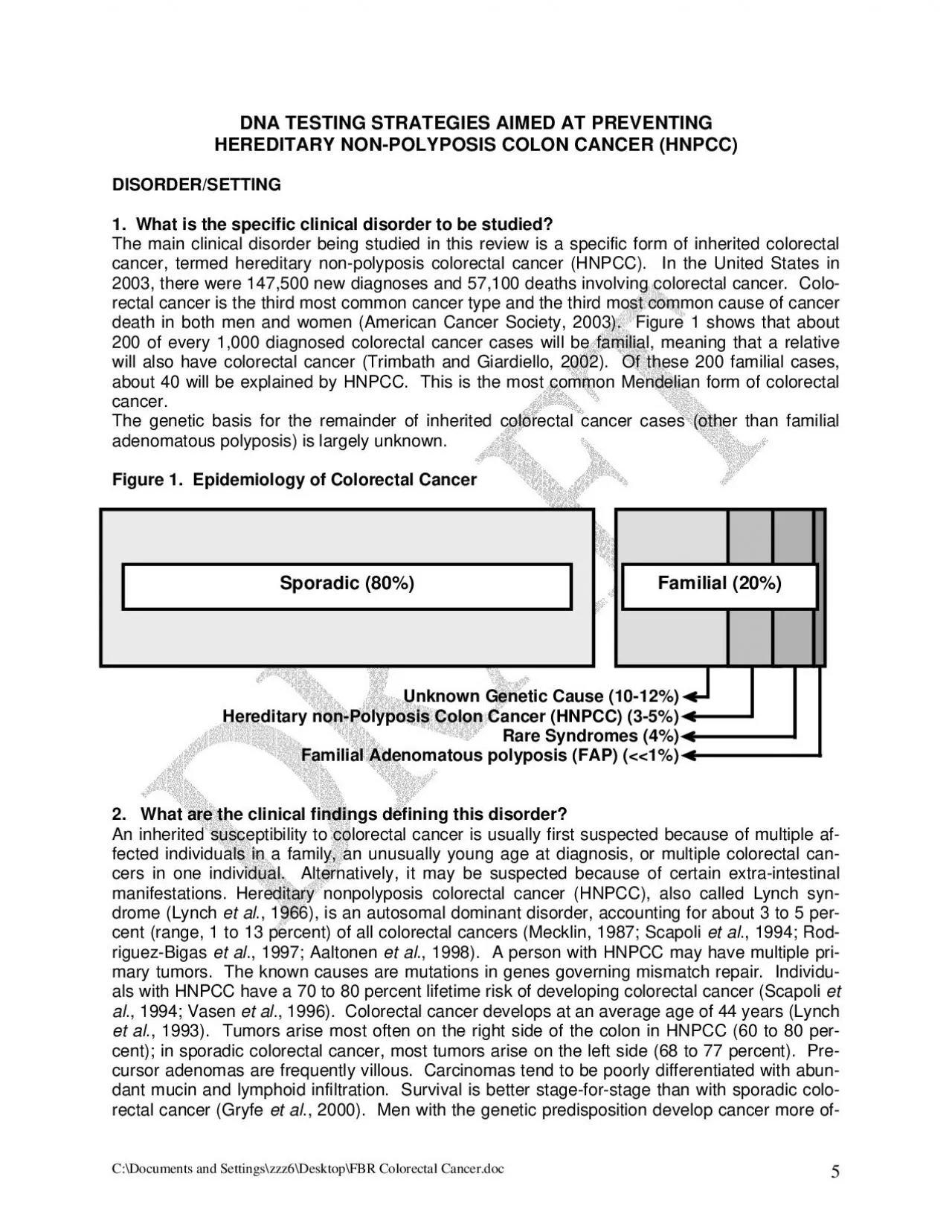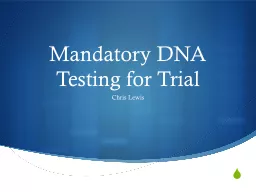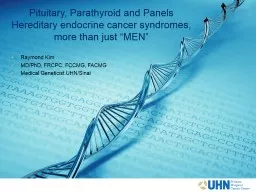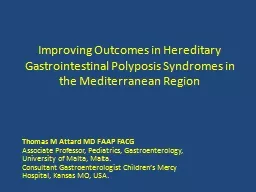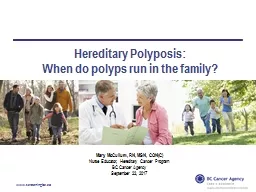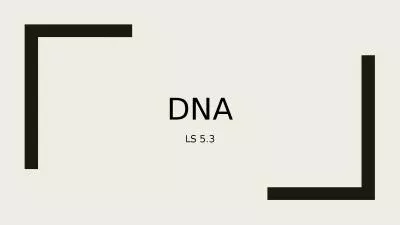PDF-DNA TESTING STRATEGIES AIMED AT PREVENTING HEREDITARY NONPOLYPOSI
Author : mary | Published Date : 2022-10-14
DISORDERSETTING 1 What is the specific clinical disorder to be studied The main clinical disorder being studied in this review is a specific form of inherited colorectal
Presentation Embed Code
Download Presentation
Download Presentation The PPT/PDF document "DNA TESTING STRATEGIES AIMED AT PREVENTI..." is the property of its rightful owner. Permission is granted to download and print the materials on this website for personal, non-commercial use only, and to display it on your personal computer provided you do not modify the materials and that you retain all copyright notices contained in the materials. By downloading content from our website, you accept the terms of this agreement.
DNA TESTING STRATEGIES AIMED AT PREVENTING HEREDITARY NONPOLYPOSI: Transcript
Download Rules Of Document
"DNA TESTING STRATEGIES AIMED AT PREVENTING HEREDITARY NONPOLYPOSI"The content belongs to its owner. You may download and print it for personal use, without modification, and keep all copyright notices. By downloading, you agree to these terms.
Related Documents

